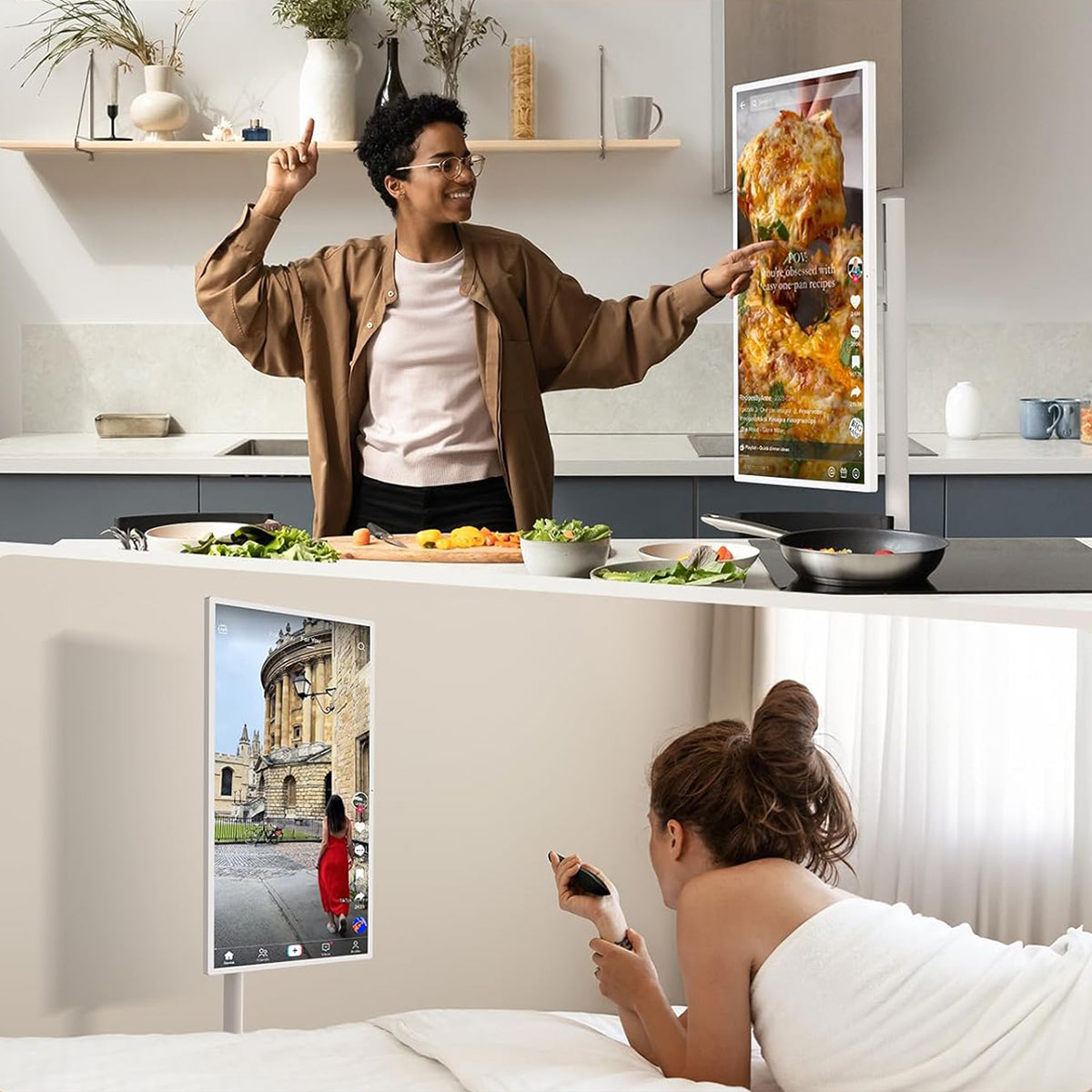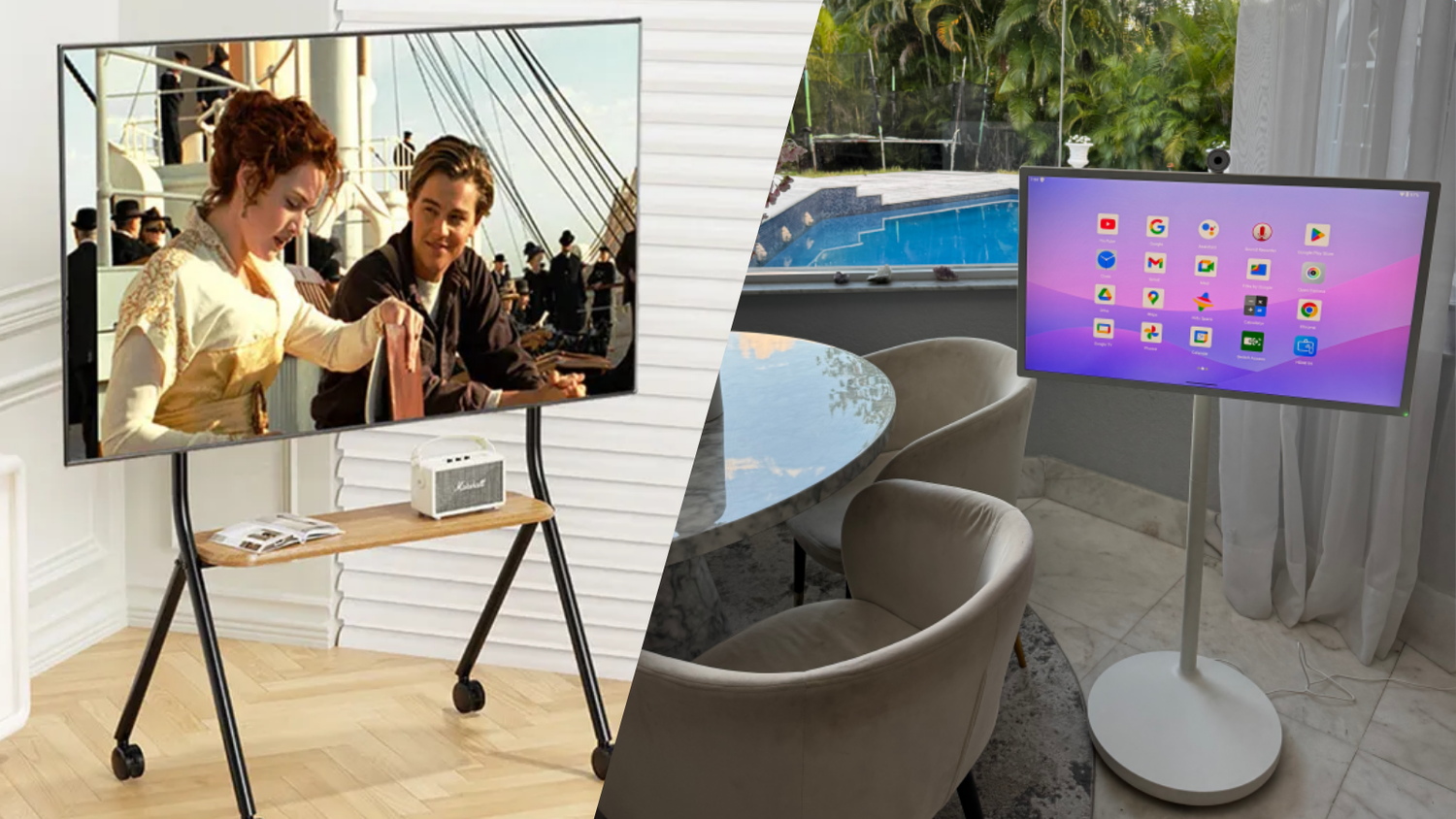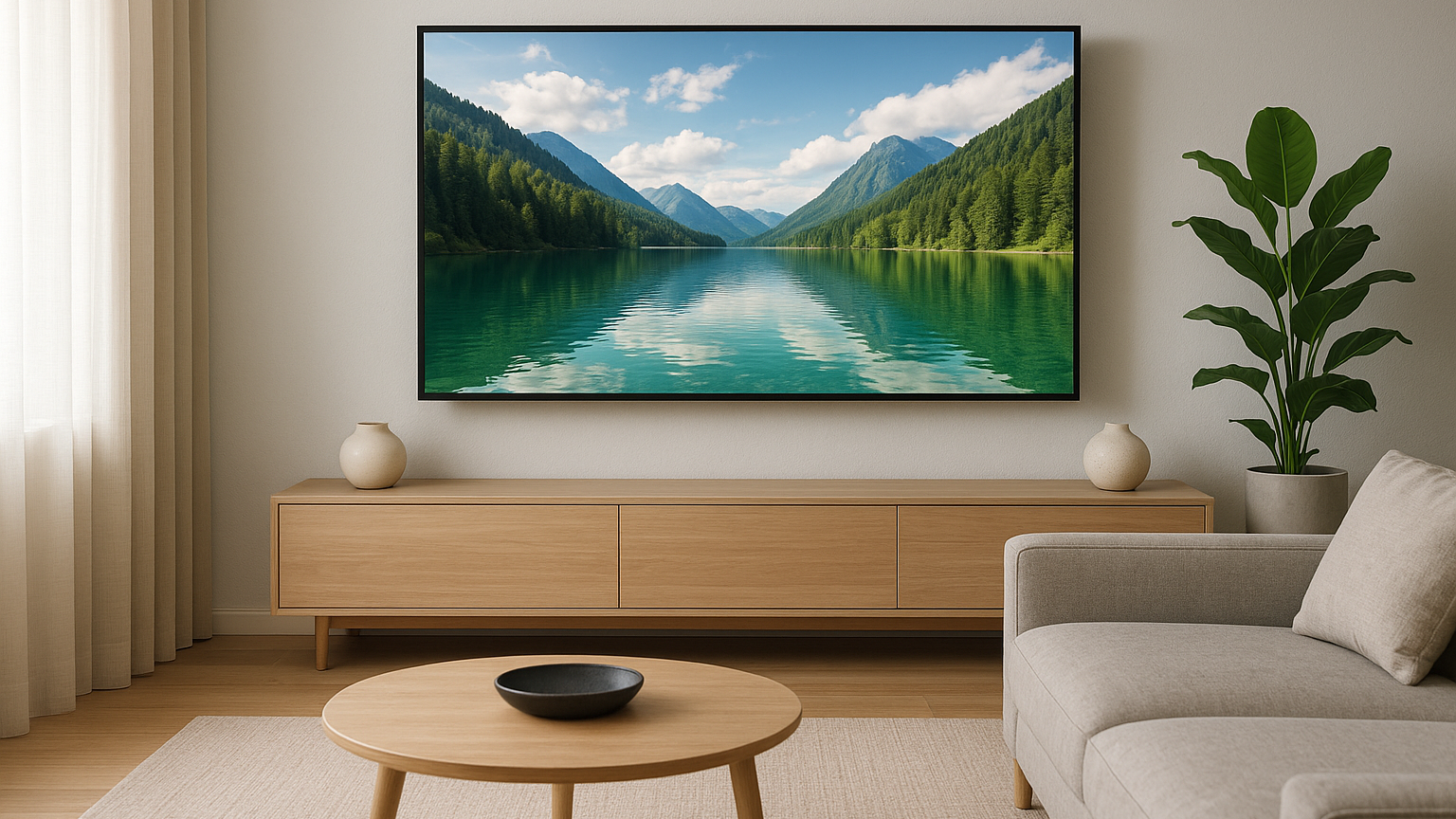Table of Contents
A rolling TV stand and a portable TV on wheels steal the show in offering mobility for your television. According to the Market Research Intellect, the Rolling TV Stand Market stood at $1.2 billion in 2024 and is anticipated to reach $2.5 billion by 2033. And even the Mobile TV market has lately witnessed growth. But, interestingly, both products are fundamentally different from each other. A rolling TV stand is a piece of furniture consisting of wheels, designed to hold your existing television, whereas a portable TV on wheels is like a one-man army, where the TV and the stand with wheels are incorporated into a single, cohesive unit. These portable TVs usually include features such as a built-in battery with a touchscreen to boost versatility, making them the perfect solution for your entertainment on the go. This blog will tell you more about their differences and the vendor to approach for getting a portable TV on wheels.
Main User Pain Points When Watching a TV
What things frustrate users when watching TV? The answer is poor audio quality, a cluttered setup, a lack of flexibility, and glare disturbing the view in the following ways:
Poor Audio Quality & Synchronization
Audio quality and synchronisation are one of the main user pain points. People don’t like the poor sound quality that built-in TV speakers usually offer. They lack richness and bass, leading to a thin, tinny sound. Apart from that, the audio-video lag is also frustrating, where the dialogue fails to sync with the action happening on-screen, impacting the immersive experience.
Cluttered Setup & Cable Management
Modern entertainment layouts can also be a mess. The number of devices includes cable boxes, gaming consoles, streaming sticks, and soundbars, each with its own power and HDMI cables. This creates a disorganized look that becomes difficult for you to maintain and clean, spoiling the aesthetics of the living space.
Lack of Portability & Flexibility
Traditional televisions are static, as once you mount or place them on a stand, moving them to another room or even adjusting the angle turns into a major hassle. Due to this lack of portability and flexibility, you are not able to enjoy the content.
Glare and Viewing Angle Limitations
Aside from internal factors, even external factors can impact your viewing experience. For instance, glare from windows or room lights makes it difficult for you to see the television. Then, certain TV technologies offer limited viewing angles, meaning that the image and color quality are not up to the mark, as colors can wash away or distort if viewed from the side, compelling you to sit in front of the screen for the best experience.
Remote Control
You often have to switch between multiple remotes to operate different devices, leaving you confused and irritated. Smart TV interfaces can also be very slow and packed with ads, making it a challenge for you to find or wait for the ad to end so you can click on your desired application. This struggle hinders a seamless viewing experience.
Rolling TV Stand vs. Portable TV on Wheels
People use the terms “rolling TV stand” and “portable TV on wheels” alternatively, but when it comes to representing their approach to mobile entertainment, that’s completely different. On one side, a rolling TV stand is a separate accessory designed to hold and move your current television, but a portable TV on wheels is an all-in-one product, amazing users with a built-in display and battery. So, let’s discuss what features make them different:
Purpose and Functionality
A rolling TV stand's main function is to provide mobility to a traditional television. It’s a piece of furniture with a mount and wheels, letting you move your television from one room to another, or simply changing its position to give better viewing angles. And the stand plays a vital role in flexibility, allowing you to use the same large-screen TV in different situations, like you can move it from your living room for partying or bedroom to enjoy movies.

On the other hand, a portable TV on wheels proves to be a more integrated solution. These often house built-in displays and at times include rechargeable batteries, meaning you don’t have to arrange a separate power outlet to operate them, delivering true freedom to move the television. This flexibility makes them ideal to use outdoors, create presentations wherever you are, and for quick pop-up displays.

Features and Design
A rolling TV stand concentrates on customization and practicality. They come with various features like height and tilt adjustments, soundbars, or media players, and built-in shelves for gaming consoles. Plus, their design supports a wide range of TV sizes and weights, so you can use a rolling TV stand outdoor too. The base of the stand is wide enough to balance larger and heavier screens.
Portable TV on wheels are all-in-one models, emphasizing a minimalist and sleek design. Their manufacturers want to keep it lightweight, easy to move, and their unique selling point rests in their self-contained nature and simplicity. Unlike mainstream televisions, which you place on a stand, a portable TV on wheels is smaller, with no cables to manage or extra devices to set up, offering you unmatched convenience.
Ideal Use Case
Which one should you choose? That depends entirely on your needs. A rolling TV stand suits those who already own a TV and want to boost the mobility of their existing setup without a major investment in a new display. This one is a great solution for living spaces, classrooms, or conference rooms that demand a large screen in multiple locations, but their operation still depends on a power source.
Whereas a portable TV on wheels is ideal if you want maximum convenience and flexibility. It suits applications where there is limited power access, such as planning a backyard movie night or when you require a quick-moving display to set up for any event or presentation. In short, a portable TV on wheels pampers you with an uninterrupted viewing experience.
Best Use Cases of Rolling TV Stand
1. Flexibility for Offices and Classrooms
A rolling TV stand is perfect for environments where screens need to be moved frequently. In offices, it allows teams to set up presentations in meeting rooms without the hassle of wall mounting. In classrooms, teachers can bring a large display directly to students, whether for lessons, interactive activities, or video demonstrations. The mobility helps save space while also making technology accessible anywhere it’s needed.
2. Home Entertainment and Events
At home, a rolling TV stand makes it easy to enjoy movies, sports, or gaming in different rooms. Instead of buying multiple TVs, families can move one screen between the living room, bedroom, or even the patio. For parties or events, it’s a simple way to set up a temporary entertainment station. This flexibility also works well for renters who don’t want to drill holes in the wall or commit to a permanent setup.
3. Trade Shows and Public Spaces
For businesses and organizations, rolling TV stands shine in trade shows, conferences, and public spaces. Exhibitors can display videos, digital signage, or interactive demos without being tied to a fixed booth structure. In hospitals, gyms, or lobbies, a mobile stand makes it easy to reposition screens based on the crowd or room layout. The ability to adjust height and angle further ensures the display can reach more people effectively.
When Portable TV on Wheels Works Best?
A portable TV on wheels falls in the category of distinct products. It is best suited for situations that require minimal setup and true mobility. Unlike a rolling stand for your current television, this is an all-in-one layout that impresses you with a built-in display and battery, making it the perfect solution for the following:
For Ultimate Flexibility at Home
Portable TVs on wheels are heavily used in homes with open floor plans or multi-purpose rooms. They open the ground for you to move your source of entertainment from the living room, in case you have thrown a movie night, to the kitchen to follow a cooking channel, or roll it inside your bedroom to binge-watch your favorite series. This permanently ends the hassle of using multiple TVs or spending hours on complicated wall-mounting and unmounting procedures, giving you instant, on-demand entertainment irrespective of your location.

For Outdoor and Off-Grid Entertainment
The primary benefit of this portable TV on wheels lies in its built-in, rechargeable battery, so you can easily use it during outdoor gatherings: backyard movie nights, camping trips, and tailgating. This advancement can operate for hours without being plugged into a power outlet, breathing life into the cinematic or gaming experience in remote locations, where you can’t even think of carrying your mainstream television.
For Dynamic, Professional, and Educational Settings
Believe it or not, the portable TV on wheels acts as a game-changer for businesses and schools. You can use them for delivering a presentation in different conference rooms, while rolling around the room for better engagement. Additionally, these setups are quick to assemble as a display at a trade show booth, and as far as education is concerned, the television helps facilitate interactive lessons in classrooms. Therefore, the quick setup, no cables, and easy movements make them a pretty versatile tool for educators and professionals who prefer a mobile display solution, instead of being tethered to stay around power outlets.
GFF Portable TV on Wheels
People are increasingly using the GFF Portable TV on Wheels mainly because of its versatile and wireless smart display designed for several uses. This product blends the convenience of the old school TV with your mobile device’s mobility in the following ways:
Key Features
The portable TV on wheels emerges with a 32-inch FULL HD touchscreen. It also has an anti-fingerprint coating, offering a clear and immersive viewing experience. Besides, the Android 13 operating system drives it, letting users download and stream content from their favorite applications. Not forgetting to mention that the built-in battery offers you 3 to 5 hours of continuous play time on a single charge.
Versatile Applications
Its wheels play a huge role in easily moving it between rooms. Furthermore, the portable TV on wheels also includes an external 2K HD camera, for you to participate in video calls, create and share presentations, and stream live for professional and personal settings.
Conclusion
We hope you are clear about the differences between a rolling TV stand and a portable TV on wheels. If you want to buy the all-in-one unit, get a quote now.





